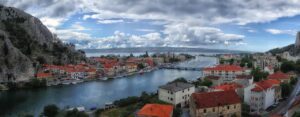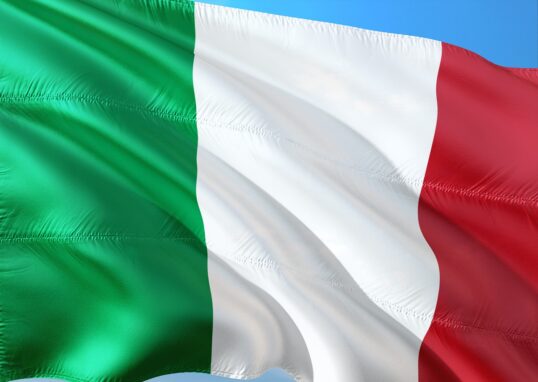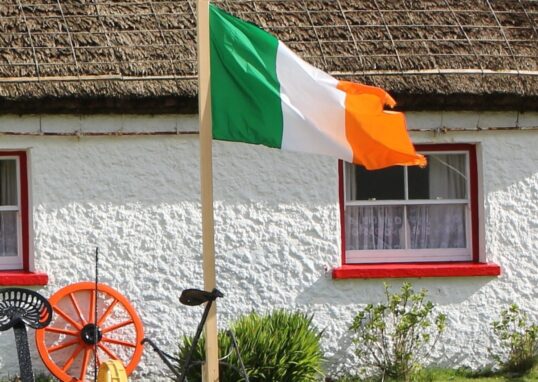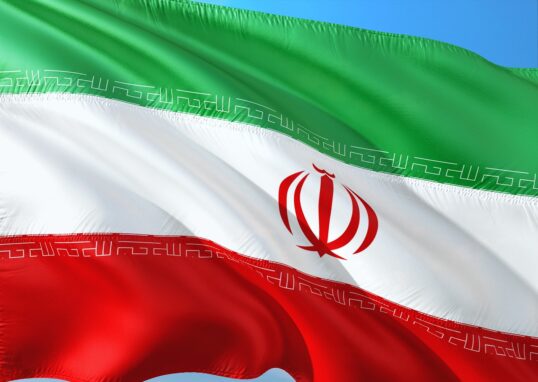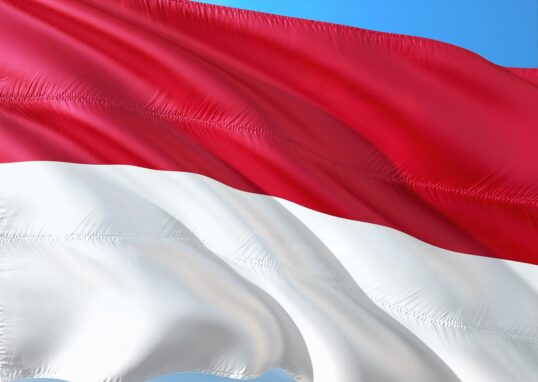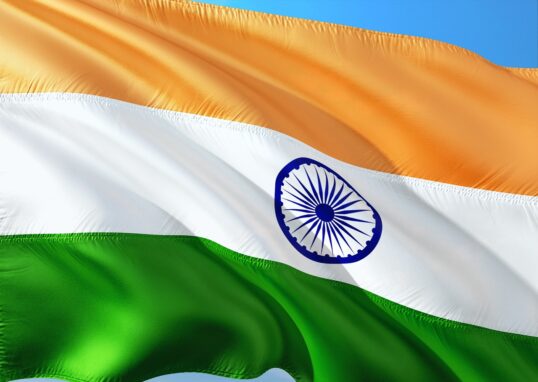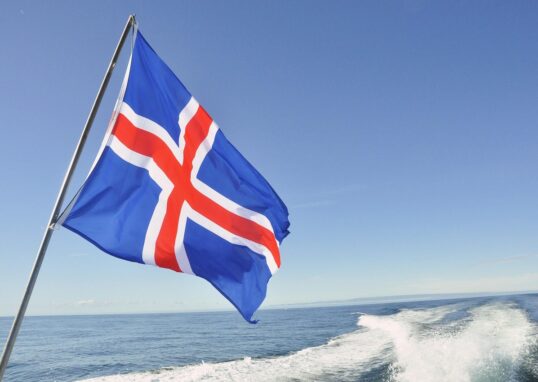
Croatia – The Land of Thousand Islands and Timeless Beauty
Croatia is a beautiful country in southeastern Europe. It is located along the Adriatic Sea and shares borders with Slovenia, Hungary, Serbia, Bosnia and Herzegovina, and Montenegro. Its capital city is Zagreb. The country is known for its crystal-clear waters, medieval towns, national parks, and sunny beaches. Every corner of Croatia tells a story of history, culture, and natural beauty. The Republic of Croatia encompasses a land area of about 56,000 square kilometers. Further, it has over 1,000 islands; only about 50 of these are inhabited. Its coastline is extended over more than 1,700 kilometers, fronts one of the most beautiful coasts in Europe. Its shape is unusual, curving around Bosnia and Herzegovina. Croatian is the official language, and the currency used is the Euro (€). The people of Croatia are very friendly, warm, and proud of their traditions. Tourism makes for one of its most important sectors of the economy. By millions, visitors come every year to enjoy its beaches, islands, and old towns. 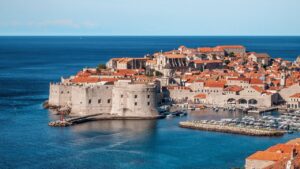
A Glimpse into Croatia’s History
Croatia possesses a long and rich history that goes back to ancient times. Among the first known inhabitants living in this territory were the Illyrians and Celts. Afterwards, it was conquered by the Romans who built roads, cities, and beautiful buildings. Diocletian’s Palace, built in the 4th century AD, stands out as one of the best examples in Croatia to date. The palace was later to become the nucleus of the city. Following the fall of the Roman Empire, Slavic people called the Croats settled in the area. During the Middle Ages, Croatia became a kingdom under King Tomislav in the 10th century. Later, it united with Hungary and later came under the rule of the Austro-Hungarian Empire.
Geography and Climate
Croatia is a country of great variety in its landscape: fertile plains and hills in the north, mountainous central part with rivers and forests, and long beaches and rocky shores facing the Adriatic Sea along the Dalmatian coast. The climate does vary. The coast has a Mediterranean climate: warm, dry summers, and mild winters on the coast. Inland areas are continental with colder winters and hot summers. And this variation enables Croatia to offer everything from sunny beaches to snow-capped mountains.
Culture and Traditions
Croatian culture is a mix of Mediterranean, Central European, and Slavic influences. Family means very much in Croatian society, and people love to spend their time together, especially over some good food and wine. Traditional village life nowadays still vigorously includes folk music and dance, also in traditional costumes. For example, klapa singing, a sort of a cappella group singing originating from Dalmatia, was recognized by UNESCO as an intangible cultural heritage. The people of Croatia also enjoy a very active sports life, especially football, considered the national game. The national team is among the strongest in Europe, having finished as runners-up in the 2018 World Cup.
Major Cities in Croatia
Zagreb – The Capital City
Zagreb is situated in the northwestern part of Croatia. It’s a lively city full of culture, art, and history. The city is divided into two main parts: Upper Town – Gornji Grad and Lower Town-Donji Grad. It contains historic sites like St. Mark’s Church with its brightly colored tiled roof, Lotrščak Tower with its great view of the city, and a generally picturesque setting created by cobble streets and older building faces.
Split – The Heart of Dalmatia
Split is the second-largest city and one of the most popular tourist destinations in the country. It lies on the Dalmatian coast and is known for its ancient Roman palace built by Emperor Diocletian. The Diocletian’s Palace is a UNESCO World Heritage Site and forms the centre of the old town. One can also stroll through narrow alleys, Roman pillars, and stone courtyards. The Riva promenade by the sea is ideal for walking, dining, and simply watching the sun set.
Dubrovnik – The Pearl of the Adriatic
Among the most beautiful cities of Europe, Dubrovnik appears to be a fairytale city surrounded by colossal stone walls. The Old Town of Dubrovnik is a UNESCO World Heritage Site fully packed with baroque buildings, marble streets, and old churches. The top attraction is the 10th-century City Walls. A stroll along them offers breathtaking views over the red roofs and the blue sea. Among other not-to-be-missed attractions are the Rector’s Palace, Sponza Palace, and Stradun Street.
Zadar – The City of Sunsets
It is based in north Dalmatia, a mix of old and new, where Roman ruins meet the installation of modern art. The Sea Organ and the Greeting to the Sun are two unique attractions. While the Sea Organ uses the movement of sea waves to play music, the Greeting to the Sun shines bright at night with the power of the sun captured during the day.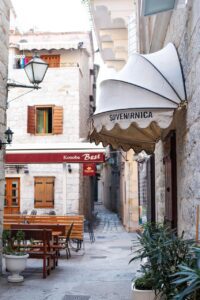
Rijeka – The Port City
Rijeka is an important port city in the area of Kvarner Bay, having a very long maritime tradition and a dynamic cultural life. The Trsat Castle stands on the top of the hill, offering beautiful views of the surroundings. Rijeka was the European Capital of Culture in 2020, and it still attracts visitors for its festivals, museums, and seafront.
Pula – The City of the Roman Arena
Pula is the major city of the Istrian Peninsula and is famous for its Roman amphitheater, called Pula Arena. This is one of the best-preserved Roman arenas in the world. Nowadays, the place is used for concerts, film festivals, and other cultural events. The city also features Roman temples, arches, and a very nice harbor area. Its beaches are pretty calm, while the close vicinity to Brijuni Islands National Park adds to its natural beauty.
Islands of Croatia
Croatia is famous for its beautiful islands scattered around the Adriatic Sea. Each island has its own character, history, and attractions. There are over a thousand islands, but only about fifty of them have inhabitants. Let’s explore in detail the most famous and beautiful islands of Croatia.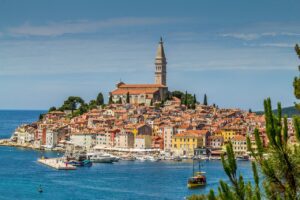
Hvar Island – The Island of Sunshine
Hvar is one of the most famous islands in Croatia and is situated in the central Dalmatian archipelago. This island is well-known for its sunny weather, crystal waters, and lavender fields. The main town also bears the name Hvar Town and is full of life and historic events. Above the town, Hvar Fortress turns up a beautiful panoramic view of the sea and the nearby Pakleni Islands. The luxurious yachts fill the harbor, while old town streets are lined with stone houses, cafés, and boutiques.
Brač Island – Home of the White Stone
Brač is the third-largest island in Croatia, located near Split. The most famous thing about this island is arguably the Zlatni Rat Beach, one of the most photographed beaches in Europe, whose unique shape changes with winds and tides. The island’s white limestone has been used in famous buildings, including the White House in Washington D.C. Visitors can explore quarries near the town of Pučišća and learn about this traditional stone carving.
Korčula Island – The Home of Marco Polo
Korčula is often called “Little Dubrovnik” because of its medieval walls and red-roofed houses. The island is believed to be the birthplace of the famous explorer Marco Polo. Korčula Town is the main center, with narrow streets built in a fishbone pattern to protect against the wind. In the old town, there are several churches, museums, and cafes. Of course, St. Mark’s Cathedral is one landmark that should not be missed, with its tall bell tower and lovely views.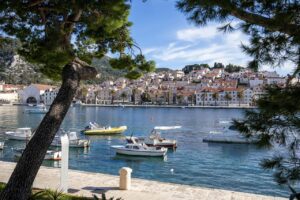
Vis Island – The Hidden Gem
Vis used to be a military base and was closed until 1989 to foreign visitors. Due to that, the island has maintained its natural charm and authenticity. It is one of the most untouched islands in Croatia. The island has many beautiful beaches, such as Stiniva Bay with steep cliffs all around. On the nearby island of Biševo, a famous Blue Cave shines bright blue and attracts thousands every year. The big settlements are Komiza and Vis Town.
Mljet Island – The Island of Nature
Mljet is an emerald paradise close to Dubrovnik and one of the most beautiful and tranquil islands in Croatia. Mljet National Park takes up more than a third of the island and contains two saltwater lakes: Veliko and Malo Jezero. In the middle of the large lake lies a small island with a Benedictine monastery. Visitors can reach it by boat and enjoy the silence and natural beauty there. The island is full of pine forests, hiking trails, and cycling routes. The small villages on Mljet are quiet and friendly. Loco people grow olives, grapes, and figs, and serve fresh seafood in family restaurants. Mljet is very often arranged as a day trip from Dubrovnik, but overnights make travelers appreciate the peaceful atmosphere and stunning sunsets.
Pag Island – The Island of Cheese and Music
Pag is unique with its rocky landscape that looks almost lunar. It is famous for Pag cheese made from sheep’s milk flavored by local herbs. The island has two faces: the quiet traditional town of Pag and the loud and vivid beach town of Zrće near Novalja, which is known as Croatia’s party capital. At Zrće Beach, famous DJs and summer festivals take place, which attracts youth from all over Europe. Pag also produces sea salt and lace, both traditional crafts of the region. Visitors can see salt pans and lace-making workshops. Yet amidst all this partying, large swaths of Pag are subdued and perfect to explore by bicycle or car. All in all, the combination of music, cuisine, and tradition makes Pag probably one of Croatia’s most versatile islands.
Krk Island – The Bridge to the Mainland
Krk is among the largest Croatian islands and is connected with the mainland by a bridge, which makes it very easy to reach by car. Krk Town is known for its historic buildings, which include a cathedral and medieval walls. The island is home to little villages such as Punat, Vrbnik, and Baska. Vrbnik is famous for its Žlahtina wine, and visitors can enjoy wine tastings in traditional cellars. Baska has a long sandy beach and hiking trails with great sea views. The island also has caves, olive groves, and scenic coastal paths. Because of its position, Krk is a great starting point for exploring nearby islands or the Kvarner Gulf.
Cres and Lošinj – The Twin Islands
Cres and Lošinj are two connected islands with different characters: Cres, being wild and rugged, and Lošinj with its lush greenery is known for fresh air and health tourism. Cres hosts the ancient towns of Osor and Lubenice, with their beautiful views of the sea. Rare griffon vultures also call this island home, taking to the skies on thermals off the cliffs. Lošinj, on the other hand, is filled with gardens and pine forests. Its major town, Mali Lošinj, with its houses painted in different colors, houses a lively marina. The island is known for its population of dolphins, even housing a dolphin research center. Both islands are ideal for hiking, cycling, and swimming. They are less crowded, perfect for travelers who love nature. 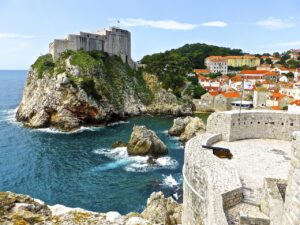
National Parks and Natural Beauty
Croatia boasts many national parks and nature reserves.
Plitvice Lakes National Park
This park is among the most visited sites in Croatia because here, 16 turquoise lakes are connected by waterfalls, and around them is the forest. Wooden walkways enable one to walk above the water in safety.
Krka National Park
Situated near Šibenik, Krka boasts beautiful waterfalls and crystal-clear pools suitable for swimming. This place presents the striking Skradinski Buk Waterfall.
Brijuni National Park
This archipelago off the coast of Pula combines nature and history in a place once reserved for privacy by leading figures, now public.
Paklenica National Park
Ideal for hikers and rock climbers, Paklenica is situated in the Velebit Mountains and contains dramatic cliffs and caves.
Croatian Cuisine
Croatian cuisine differs according to the region. On the coast, one can find Mediterranean flavors: seafood, olive oil, and herbs. Inland parts prefer meat dishes, stews, and hot soups. Popular dishes include:
- Peka – meat or seafood cooked under a bell-shaped lid with potatoes and vegetables.
- Ćevapi – small grilled sausages served with flatbread and onions.
- Pašticada – a slow-cooked beef dish from Dalmatia.
- Black Risotto (Crni Rižot) – made with squid ink.
- Pag Cheese (Paški Sir) – famous sheep cheese originating from Pag Island. Not to be overlooked are Croatian wines, like Plavac Mali and Malvazija.
Festivals and Events
In Croatia, a great number of cultural events and festivals take place.
- Dubrovnik Summer Festival – theater, music, and dance performances. Ultra Europe Festival – the electronic music festival in Split.
- Rijeka Carnival is one of the biggest carnivals in Europe. Sinjska Alka – a traditional knight tournament held in Sinj. These festivals bring together locals and tourists to celebrate music, art, and history.
Surrounding Places of Croatia
Croatia is also surrounded by beautiful neighbors that enhance its appeal.
Slovenia
To the northwest is Slovenia, with its famous Lake Bled, Ljubljana, and Postojna Caves. The two countries have close cultural relations and also share a small but beautiful border.
Bosnia and Herzegovina
It comprises natural and cultural riches from southeastern Bosnia and Herzegovina, from the city of Mostar with its famous bridge to the multicultural city of Sarajevo.
Hungary
The capital Budapest is only a few hours drive northeast from Austria’s border. The two nations share old Austro-Hungarian relationships.
Montenegro
To the south, Montenegro offers stunning coastal towns like Kotor and Budva. Many visitors combine a Croatia and Montenegro trip.
Italy (across the Adriatic Sea) Italy is on the opposite side of the sea. From Split or Dubrovnik, ferries connect to Bari and Ancona. This enables extremely interesting and comfortable travel between these two Mediterranean countries.
Tourism and Travel Experience
Tourism and Travel Experiences One of the top travel destinations in Europe is Croatia. From beaches, culture, and history to nature and modern comforts, it has something for everyone. The country is well connected with excellent road networks, ferries, and airports. Summer is the high season, where beaches and islands are swarmed with tourists. It is quiet during spring and autumn; these are good seasons to visit cities and parks. Winter promises festive markets and snow sports in mountainous areas.
Conclusion
Croatia is truly a land of wonders. Its mix of old towns, islands, and natural parks makes it unique. From the walls of Dubrovnik to the waterfalls of Plitvice, every place feels like a painting. Croatia’s islands are true gems of the Adriatic. From the glamour of Hvar to the wild beauty of Vis, each island offers something special. Visitors can find quiet villages, clear beaches, ancient towns, and delicious food. The people’s warmth, the taste of its food, and the charm of its coasts all mix into an unforgettable experience. Whether you love history, nature, or relaxation, Croatia warmly opens up to you with endless beauty.
